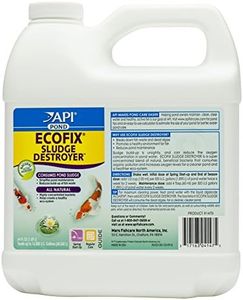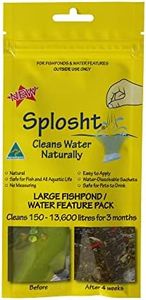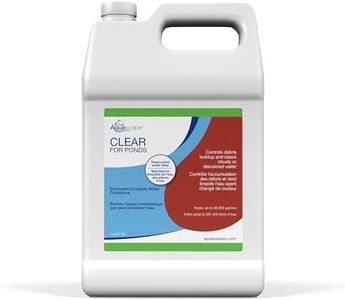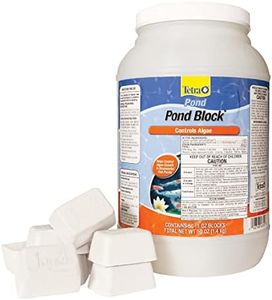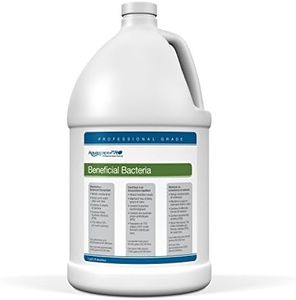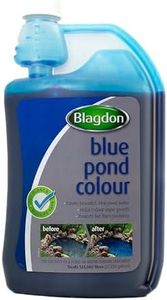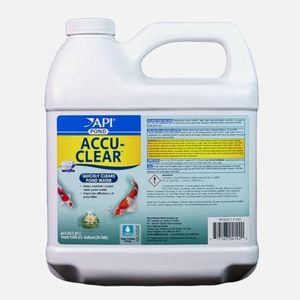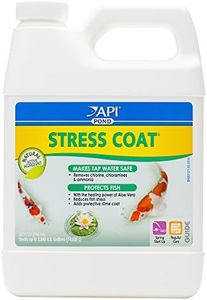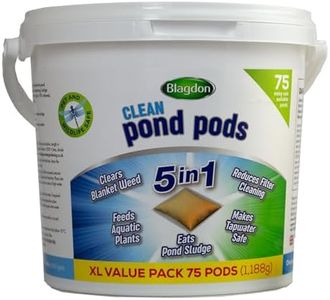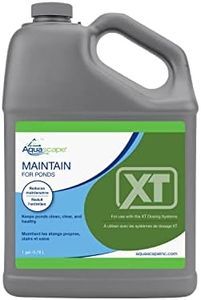We Use CookiesWe use cookies to enhance the security, performance,
functionality and for analytical and promotional activities. By continuing to browse this site you
are agreeing to our privacy policy
10 Best Pond Treatments
From leading brands and best sellers available on the web.Buying Guide for the Best Pond Treatments
Choosing the best pond treatment is vital for maintaining a healthy, clear, and balanced aquatic environment. There are many types and formulations available, each designed to target specific pond concerns such as algae growth, murky water, or unwanted odors. To select the right treatment, it's essential to understand the particular issues your pond is facing and match them with the appropriate solution. Knowing a bit about your pond’s size, type (such as fish or decorative pond), and local climate will also help you pick the most effective and safe treatment.Treatment PurposeThe purpose of a pond treatment refers to the specific issue it is designed to address, such as controlling algae, clarifying water, balancing nutrients, or removing sludge. This is important because not all problems require the same solution and using the wrong treatment can lead to poor results or even harm pond life. Treatment purposes can be divided into categories like algae control, water clarification, beneficial bacteria, and chemical balancers. To pick the right purpose for you, closely observe your pond to identify the main problem—if it’s green and cloudy, you might need algae control; if debris is collecting at the bottom, a sludge remover is better; if the water is just a bit murky, a clarifier could work. Matching your pond’s needs to the treatment’s advertised purpose will lead to better success.
Application MethodThe application method refers to how the treatment is added to your pond, such as liquid, powder, tablet, or ready-to-use packs. This is important because some methods are easier to use and distribute evenly, while others may be suited for larger or smaller ponds. Liquids disperse quickly and are great for immediate results, powders can be good for customizing the dose, and tablets or packs offer convenience and steady, slow-release effects over time. Your choice should consider how involved you want to be in the process—those looking for simplicity may prefer ready-to-use packs, while more hands-on pond keepers might choose powders or liquids for more direct control.
Pond Size CoveragePond size coverage tells you the maximum area, usually in gallons or liters, that a specific amount of treatment can effectively handle. This is crucial because under-dosing can lead to poor results, while over-dosing can harm plants and animals in the pond. Treatments often come labeled for small, medium, or large ponds, or with instructions for calculating doses based on your pond size. To pick the right one, you need to know the volume of water in your pond. Once you know your pond’s capacity, make sure you choose a treatment that explicitly covers that amount or lets you easily measure and mix the right dose.
Wildlife and Plant SafetyWildlife and plant safety indicates whether the product is safe to use around fish, frogs, birds, and aquatic plants. This is especially important if your pond contains living creatures—some treatments may clear water quickly but risk harming natural life. Labels will state if treatments are wildlife and plant safe, sometimes specifying for which animals or plants. If your pond houses pets or supports local wildlife, always choose a treatment clearly marked as safe for all pond inhabitants and plants; only opt for harsher treatments for decorative ponds with no living things.
Treatment Frequency and DurationTreatment frequency and duration describe how often you need to reapply the treatment and how long it takes to see results. This matters because some treatments work instantly but need frequent application, while others take longer to show effect but last for weeks. Treatments can be single-use, weekly, or monthly, and may clear issues in hours or several days. If you prefer less maintenance, look for long-lasting or slow-release options; if rapid results matter (for example before an event or during a severe outbreak), choose faster-acting treatments, understanding these may require follow-up doses.


